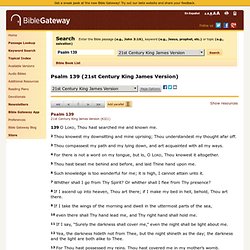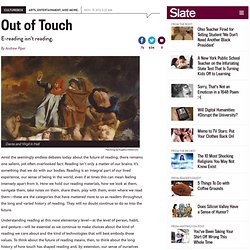

Combining fitness quotes with pictures of alcohol consumption results in unexpected life lessons. An Incredible Hand-Painted Letterform Demonstration by Glen Weisgerber. Self-taught artist Glen Weisgerber is a master pinstriper who has been in business since the early 1970s painting all matter of truck lettering, race cars, logo designs, guitars and bike customizations.

This summer Airbrush Action Magazine filmed Weisgerber doing a number of different hand lettering tutorials including single stroke lettering, and chrome lettering. It’s almost a miracle to see each letterform leave his paintbrush so fully formed and perfect. If I was asked to make a list of 100 guesses of what this man was about to demonstrate based on his looks alone, I don’t think pinstriping would have crossed my mind. Mapped: Every Protest on the Planet Since 1979 - By J. Dana Stuster. This is what data from a world in turmoil looks like.

The Global Database of Events, Language, and Tone (GDELT) tracks news reports and codes them for 58 fields, from where an incident took place to what sort of event it was (these maps look at protests, violence, and changes in military and police posture) to ethnic and religious affiliations, among other categories. The dataset has recorded nearly 250 million events since 1979, according to its website, and is updated daily.
John Beieler, a doctoral candidate at Penn State, has adapted these data into striking maps, like the one above of every protest recorded in GDELT -- a breathtaking visual history lesson. Some events to watch for as you scroll through the timeline: Strikes and protests in response to British Prime Minister Margaret Thatcher's economic reforms. The map also shows some of the limits of Big Data -- and trying to reduce major global events to coded variables. John Beieler. The Art of Data Visualization. The Wilderness Downtown. Psalm 139 KJ21 - O LORD, Thou hast searched me and known. 139 O Lord, Thou hast searched me and known me. 2 Thou knowest my downsitting and mine uprising; Thou understandest my thought afar off. 3 Thou compassest my path and my lying down, and art acquainted with all my ways. 4 For there is not a word on my tongue, but lo, O Lord, Thou knowest it altogether. 5 Thou hast beset me behind and before, and laid Thine hand upon me. 6 Such knowledge is too wonderful for me; it is high, I cannot attain unto it. 7 Whither shall I go from Thy Spirit?

Two spaces after a period: Why you should never, ever do it. Illustration by Slate.

Can I let you in on a secret? Typing two spaces after a period is totally, completely, utterly, and inarguably wrong. And yet people who use two spaces are everywhere, their ugly error crossing every social boundary of class, education, and taste.* You'd expect, for instance, that anyone savvy enough to read Slate would know the proper rules of typing, but you'd be wrong; every third email I get from readers includes the two-space error. (In editing letters for "Dear Farhad," my occasional tech-advice column, I've removed enough extra spaces to fill my forthcoming volume of melancholy epic poetry, The Emptiness Within.) The public relations profession is similarly ignorant; I've received press releases and correspondence from the biggest companies in the world that are riddled with extra spaces. A Slate Plus Special Feature: Never, ever use two spaces after a period: Listen to Mike Vuolo read Farhad Majoo’s classic takedown of an enduring typographic sin.
SUPERTYPE! - Comic Book Mastheads. Reading on a Kindle is not the same as reading a book. Painting by Eugène Delacroix.

Amid the seemingly endless debates today about the future of reading, there remains one salient, yet often overlooked fact: Reading isn’t only a matter of our brains; it’s something that we do with our bodies. Reading is an integral part of our lived experience, our sense of being in the world, even if at times this can mean feeling intensely apart from it. How we hold our reading materials, how we look at them, navigate them, take notes on them, share them, play with them, even where we read them—these are the categories that have mattered most to us as readers throughout the long and varied history of reading. They will no doubt continue to do so into the future. Understanding reading at this most elementary level—at the level of person, habit, and gesture—will be essential as we continue to make choices about the kind of reading we care about and the kind of technologies that will best embody those values.